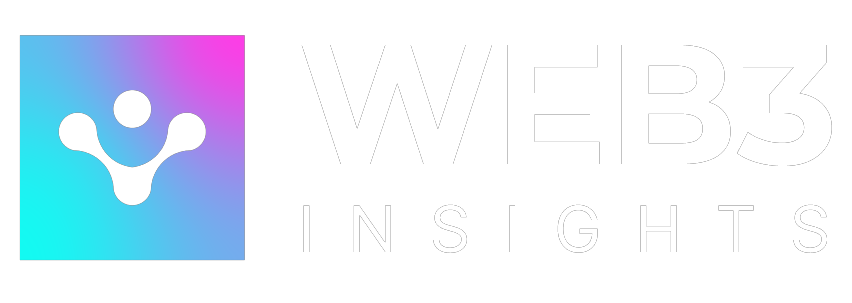
Investing in ETFs isn’t as complicated as it sounds. You don’t need fancy trading software or a finance degree, just a phone, a broker app, and a bit of curiosity. In 2025, ETFs are the go-to choice for anyone seeking to invest without the stress of selecting individual stocks.
So what’s the deal? An ETF allows you to invest in a diversified mix of assets, such as stocks, bonds, or even cryptocurrencies, all consolidated into a single fund that can be traded just like a stock. It’s simple, cost-efficient, and works whether you’re investing $10 or $10,000.
And now, with crypto ETFs entering the game, you can even invest in Bitcoin, Ethereum, and Web3 projects straight from your regular brokerage. No wallets. No keys. Just a few clicks.
This post breaks down exactly how to invest in ETFs, from opening your first brokerage account to picking funds that match your goals (yes, even crypto ones). Let’s walk through it.
Steps to Invest in ETFs

Getting started is easier than most beginners realize. Think of it like ordering something online, a few clicks and you’re in the game. Here’s how to do it step by step.
1. Open a brokerage account
Pick a broker that works for you. Big names like Fidelity, Charles Schwab, or Robinhood make it easy to start, and most have apps that let you trade on the go. Signing up takes a few minutes, and you’ll need basic info like ID and bank details.
2. Research ETFs
Next, figure out what you want to invest in. If you’re starting simple, check out SPY (S&P 500), VTI (total U.S. market), or crypto ETFs like IBIT (Bitcoin) and GDLC (top 5 crypto assets). Look at things like fees, track record, and market size; low-cost ETFs usually make life easier for beginners.
3. Buy shares
Once you know which ETF you want, use your broker’s app to place a buy order. You can buy a full share or, in many brokers, fractional shares if your budget is small. That’s it, you’re officially an ETF investor!
Pro tip: Start small. Even $50–$100 is enough to get going and start learning. You can always add more over time.
Tools and Tips for Investing in ETFs

Once you know which ETF to buy, having the right tools and strategies makes everything smoother. Think of this as setting up your investing toolkit.
Broker apps
Your brokerage app is your main weapon. Apps like Fidelity, Schwab, and Robinhood let you research, buy, and track ETFs all in one place. Most are intuitive and beginner-friendly, with charts, news, and watchlists to keep you informed.
ETF screeners
Screeners help you compare ETFs at a glance. Websites like ETF.com or your broker’s built-in tools let you filter by expense ratio, market cap, asset type, or performance. This makes picking the right fund a lot less overwhelming.
Start small and diversify
You don’t have to go all-in on one ETF. Spread your investment across a couple of funds, maybe one broad-market ETF like SPY and one crypto ETF like IBIT. Diversification helps reduce risk and keeps your portfolio balanced.
Check fees and expenses
Even small differences in expense ratios add up over time. Keep an eye on costs: broad-market ETFs can be as low as 0.03%, while specialty or crypto ETFs might be closer to 1%.
Remember: Investing is a marathon, not a sprint. Start small, learn as you go, and adjust your strategy over time.
Investing in Web3 ETFs

Web3 ETFs are where the future of investing meets blockchain, without the headache of managing wallets or private keys. These ETFs let you get exposure to crypto and blockchain projects just like any other stock or fund.
Start with big names
If you want Bitcoin exposure, iShares Bitcoin Trust (IBIT) is one of the easiest ways to get started. It’s huge, liquid, and trades on your regular broker platform. For a bit more diversity, Grayscale CoinDesk Crypto 5 ETF (GDLC) spreads your investment across five major crypto assets, so you’re not relying on just one coin.
Explore strategy-based ETFs
Some ETFs, like Global X Bitcoin Covered Call (BCCC) or Roundhill Bitcoin Covered Call Strategy (YBTC), offer strategies that aim to generate income while giving you crypto exposure. And for those interested in steady payouts, NEOS Bitcoin High Income ETF (BTCI) combines crypto exposure with income-focused strategies.
How to buy them
It’s simple. Once your brokerage account is ready, just search for the ETF ticker (like IBIT or GDLC) and place your buy order. No wallets, no exchanges, no complicated setup, just a few clicks.
Why beginners love them
Web3 ETFs make crypto investing approachable. You get regulated exposure, easy trading, and a way to learn the space without risking direct ownership of volatile assets. Start small, track performance, and add more as you get comfortable.
FAQ: How to Invest in ETFs

1. What’s the minimum to invest in ETFs?
Most brokers let you start with any amount, thanks to fractional shares. You can invest $10, $50, or $100 and still buy into funds like SPY or IBIT.
2. Can I buy crypto ETFs?
Absolutely. Crypto ETFs like IBIT or GDLC trade on regular stock platforms; no wallets or crypto exchanges required. They’re the easiest way to dip into blockchain assets safely.
3. Which brokers offer ETFs?
Top beginner-friendly brokers include Fidelity, Schwab, Vanguard, and Robinhood. All of them let you buy traditional and crypto ETFs in a few clicks.
4. How often should I invest?
Start small and be consistent. Many investors choose monthly contributions, which takes advantage of dollar-cost averaging and smooths out market ups and downs.
5. Are ETFs risky?
Like any investment, they carry risk. Broad-market ETFs are generally safer, while crypto ETFs are more volatile. The key is to diversify and invest only what you can afford to leave for the long term.
6. Can I sell ETFs anytime?
Yes. ETFs trade just like stocks, so you can sell during market hours. That’s one big advantage over mutual funds, which only settle once per day.
Conclusion
Investing in ETFs is simpler than most beginners think. With a brokerage account, a few clicks, and some basic research, you can start building a portfolio that grows with you.
Whether it’s a broad-market fund like SPY or a Web3-focused ETF like IBIT, you get exposure to assets without the hassle of managing them directly. Start small, diversify, and stay consistent. Over time, your portfolio can compound and grow.






